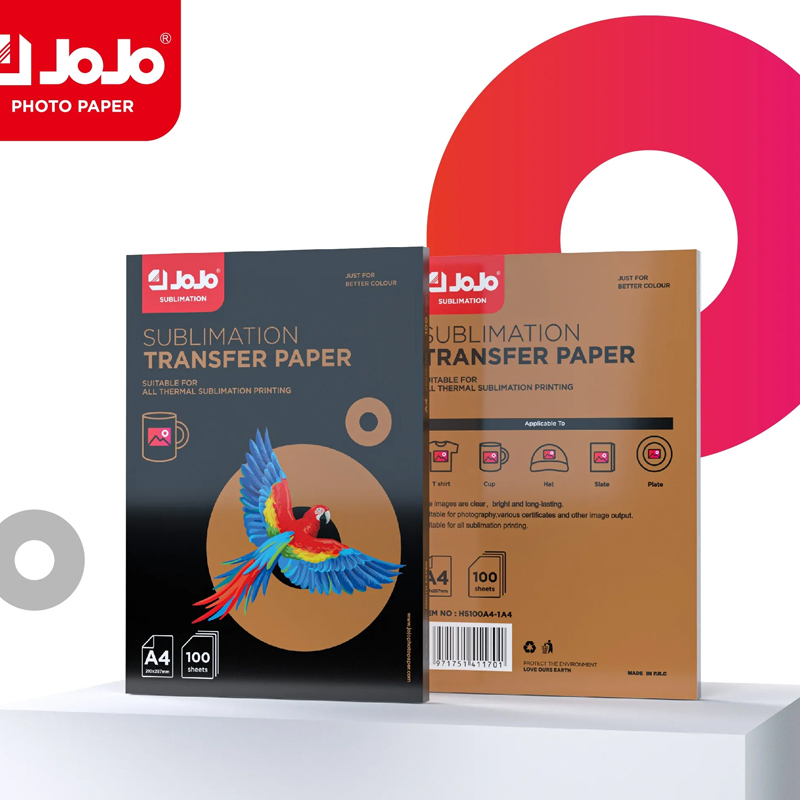If you need any help, please feel free to contact us
Glossy Jojo Paper Secrets: No More Smudged Memories
Printed photos remain an important way to share and preserve personal moments, creative work, and promotional materials. However, many users have experienced frustration when their carefully produced prints smudge, lose sharpness, or fade faster than expected. Two materials that can help avoid these issues—Fullcolors Photo Paper and Glossy Jojo Paper—combine thoughtful coatings with compatibility across common inkjet printers.
Knowing how these papers work and understanding the steps needed to prepare and handle them can make a clear difference in print quality and durability.

Surface Coating That Holds Color
One reason smudging happens is that some photo papers lack an effective coating to lock ink pigments in place. Glossy Jojo Paper uses a refined surface layer that helps keep ink near the top of the sheet, reducing drying time and helping prevent smears when prints are removed from the printer tray.
This gloss finish also improves light reflection, contributing to the appearance of deeper blacks and brighter highlights. While gloss paper may show fingerprints more easily, handling prints carefully or wearing cotton gloves can help keep the surface clean.
Fullcolors Photo Paper takes a slightly different approach. Its coating is optimized for color consistency and smooth tonal transitions, which is useful for portraits, landscapes, and graphics that need even color distribution. Whether gloss or semi-gloss, the coating supports water-based dye inks often used in EPSON, HP, and CANON printers, helping users avoid compatibility issues.
When preparing to print, it is important to check that the printer settings match the type of paper being used. Using the correct profile and selecting the right media setting can help ensure that colors cure properly, reducing the chance of smudging.
Drying Time and Handling Precautions
Many people underestimate how drying time influences the final look of a print. Even though Glossy Jojo Paper and Fullcolors Photo Paper are developed for quick drying, large areas of solid color or heavy ink coverage still require time to set fully.
It is recommended to allow fresh prints to rest on a clean, flat surface with good airflow. Avoid stacking sheets or placing them in plastic sleeves immediately after printing. A short waiting period can prevent smudges and protect the surface from unintentional marks.
For production environments where prints are handled quickly, establishing a workflow that includes drying time between steps helps maintain quality standards. This can be as simple as creating a dedicated drying rack or spacing prints apart on a clean table.
Weight and Durability Factors
Weight affects not only the feel of the paper but also its ability to resist curling and bending over time. Glossy Jojo Paper is produced in weights that help support rigidity without becoming too thick for standard printer feeds. This balance allows for smoother operation during high-volume printing and reduces the risk of jams.
Fullcolors Photo Paper offers weight options to match different applications, whether lightweight sheets for everyday prints or heavier stock for framing. While heavier papers may take slightly longer to dry, they often deliver a more substantial impression when presented to clients or displayed in exhibitions.
When storing either type of photo paper, it helps to keep packages sealed until use and to protect them from humidity. Exposure to moisture can impact both the coating and the base paper, reducing flatness and potentially affecting ink absorption.
Color Saturation and Longevity
Another common concern is how long prints will retain their original appearance. Glossy Jojo Paper helps maintain color saturation by reducing ink penetration into the fibers. Less penetration means the pigments stay closer to the surface, which also supports clearer detail and contrast.
Fullcolors Photo Paper performs in a similar way, designed to deliver consistent saturation without bleeding or blotching. While no photo paper is immune to fading over time, especially if exposed to direct sunlight or strong artificial lighting, using the right combination of ink and paper can slow the process.
To extend the life of printed photos, consider displaying them under UV-filtered glass or using albums with protective sleeves. Keeping prints away from excessive heat and humidity also contributes to better preservation.
Practical Tips for Smudge-Free Printing
While choosing the right materials provides a strong foundation, the steps taken before and after printing are just as important:
Printer Calibration: Regularly calibrate the printer to avoid unexpected color shifts or uneven ink distribution.
Proper Loading: Make sure the paper is loaded with the printable side facing the correct direction; for Glossy Jojo Paper, this is often the smoother side.
Avoid Over-Inking: High ink saturation settings can result in longer drying times. Adjust settings if prints feel tacky even after a short wait.
Clean Output Trays: Dust or particles in the tray can stick to fresh prints. Wipe surfaces before starting a new batch.
Developing a habit of these simple checks supports better results over time and helps reduce wasted materials.

 English
English Español
Español 中文简体
中文简体 Português
Português

